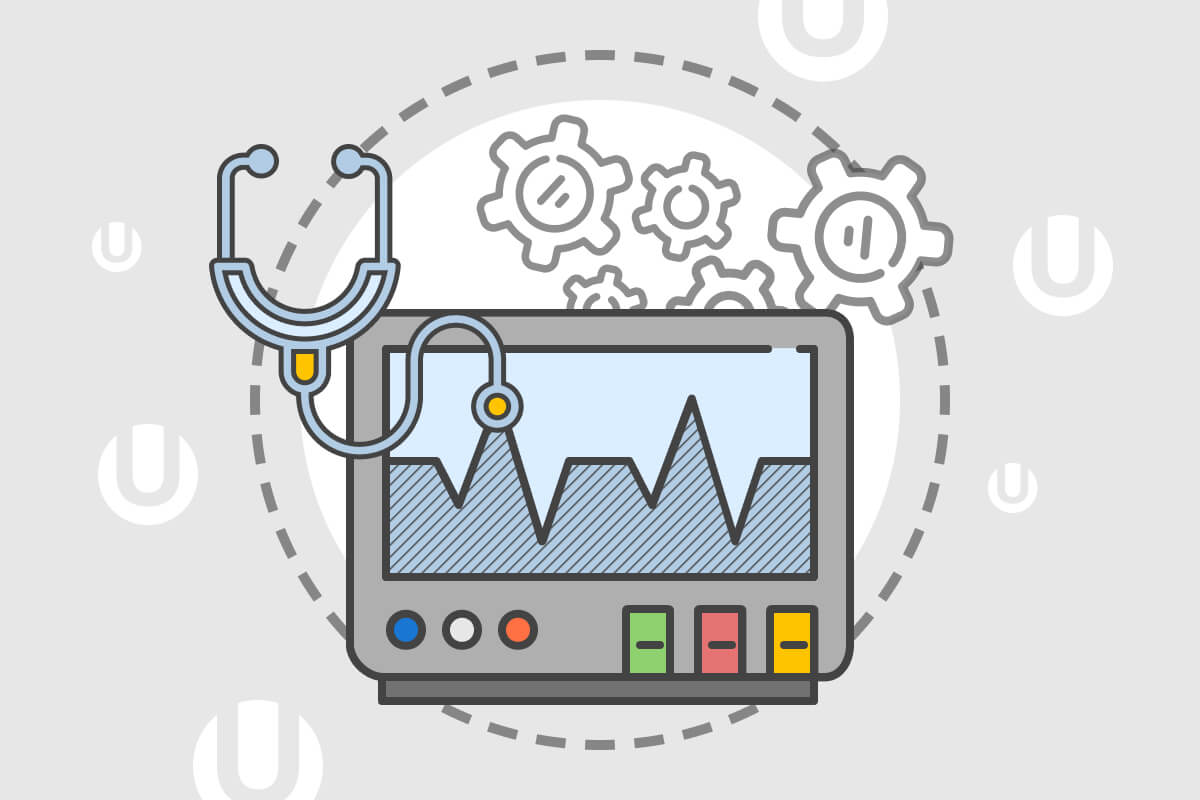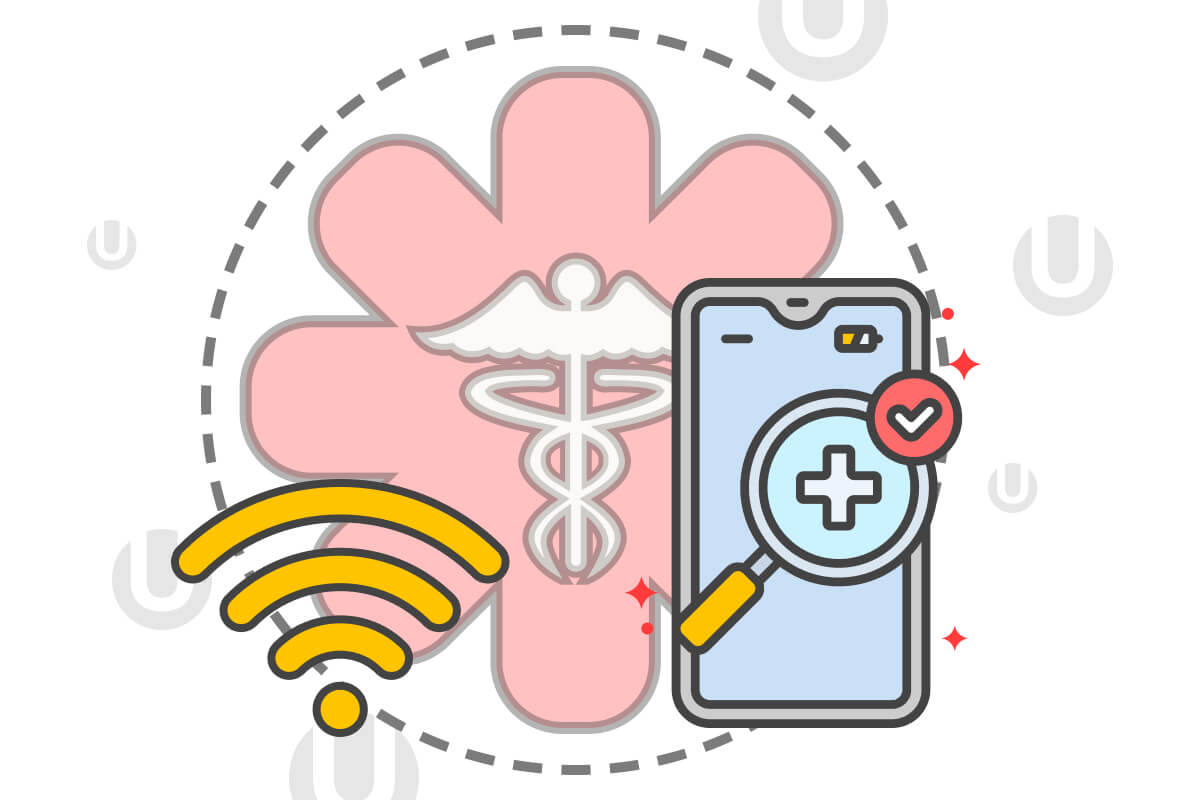What does exactly the RPA mean for healthcare solutions and what benefits does it bring? Let’s keep a closer eye on this topic.
Clinics are faced with various problems: healthcare costs are growing every year, the expected increase in the number of patients leads to the need for more medical staff. This, in turn, affects (and not for the better) the quality of medical care. At the same time, the organizations try to find ways to reduce the level of expenses, increase work efficiency, and, finally, provide better services to patients. And here where the companies need help with robotic healthcare automation since it can allow them to monitor remotely the status of clients, identify situations where the patient deviated from a given course of treatment, and much more.
What is RPA and why is it getting popular?
Robotic process automation (RPA) is the use of technologies to automate business processes. By creating algorithms based on a special platform, the developer gives the robot clear instructions and sets it up to perform the necessary tasks. Automation may include data processing, interoperability between various digital systems, and many more.
Why it’s getting popular:
- Robotization eliminates the possibilities of errors while completing tasks. Since the program has certain conditions, it cannot fail to fulfill them – unlike a person who can sometimes neglect a small nuance that will affect the whole process in the future.
- RPA helps to reduce company costs. The company needs to invest in the development of a high-quality robot only once and then is free from paying salaries and other expenditures, which are mandatory in the social package of any employee.
- RPA provides quick implementation and, consequently, a quick return on investment, but it does not require the restructuring of the company’s existing processes and IT systems.
- RPA refers to a low-code development approach which means using off-the-shelf modules to create specific solutions. This allows the company to develop software, minimally using a manual code set, as well as automate monotonous tasks.
- An indisputable advantage of this approach is the ability to work effectively with RPA-technologies, even if you are a young professional with little experience in programming. At the same time, higher-level programmers can switch to more complex and interesting creative tasks.
Why is RPA different from AI and ML?
RPA emerged from such key technologies as screen scraping, workflow automation, artificial intelligence and machine learning. The use of ML in creating RPA solutions allows robots to learn, and perform actions that depend on several factors rather than simply repeating the same order.
Some believe that RPA is a synonym for AI (Artificial Intelligence) and ML (Machine Learning), but it is not. In robotics, the robot cannot deviate from the given rules and clearly fulfills them – this is the essence of RPA. The essence of AI and ML technologies is to train the machine to make decisions autonomously, moving away from the established instructions. However, robotics may include AI and ML elements.
Trends in RPA
Due to the growth of technologies and rapid tendencies to online services, the main trends in RPA for the next years can be:
- RPA vendor differentiation
Organizations now have a great choice of more than 150 robotic process automation (RPA)-branded products of high productivity and design quality. - New RPA selection criteria
These include the overall level of requirements, proof of value, scalability and collaboration potential, robot capabilities, general security systems. - More methods of measuring the impact of RPA
It includes such methods as productivity measuring, new products and service offerings, improvement of service quality, innovations generation, operational transformations, satisfied and motivated employees. - RPA becomes AI and ML enabler
Easier access for uploading various pre-built AI, use of cognitive technologies like ‘Digital Application Exchanges’. - Clear differentiation between robots and digital workers
The digital workers are pre-built, smart, productive, multi-tasking, and can use the same IT systems as humans, without APIs and can easily automate any process. - Strategic approach to RPA
Business will explore such technologies as process discovery and mining, process automation, and data ingestion needed for complex activities of high value. This strategy can provide faster legal document validation and extraction, autonomous invoice processing, fraud detection, and other business aspects. - Integrating RPA into a broader digital transformation process.
These include finding external partners, growing expertise in automation and process optimization, clear governance, a centralized framework for IT infrastructure, change management.
Who uses RPA?
Among the main applications of RPA include the following:
- Customer service: RPA can help businesses improve customer service by automating customer service tasks like confirming e-signatures, processing scanned documents, and validating data for automatic approvals or rejections.
- Accounting: Businesses can use RPA for accounting needs, operational accounting, transferring reports, and budgets.
- Healthcare: Medical businesses use RPA in Healthcare for managing patient data, reports, records, claims, customer service, accounting, billing, analytics.
- Human resources: RPA can process HR business tasks, like processes of onboarding and offboarding, revising, and updating employee data and submission processes.
- Financial operations: Financial businesses can use RPA for international exchange payments, account openings, and closings automations, operating audit requests, and dealing with insurance claims.
- Supply chain management: RPA can be used for acquisition, order processing, and payments, checking inventory levels, and monitoring shipments.
Perspectives and predictions of RPA
Today, the main perspectives and predictions in terms of the development of RPA technology are connected to the ability of software robots to perform actions as humans do. In other words, it is a combination of robotization of business processes with AI and ML, which involves:
- The ability of robots to obtain information from unstructured data sources. Now robots can easily process structured data like tables, database records, e-mails, and there is a prediction that robots will use artificial intelligence to separate the necessary information from a complex unstructured data set. For example, the robot will be able to form tasks and set deadlines based on the decisions made with the assignment of these tasks to specific employees, for example, through electronic document management.
- The ability of robots to make decisions. Today, robots can make simple decisions based on “if A – then B” algorithms. Developed versions of this technology also already include elements of machine learning, where the situation is not described in the algorithm. The robot offers a person to solve this problem once and after repeating a similar situation, it is able to implement the solution based on the previous set of algorithms. With the development of machine learning, it’s predicted the robots can make the right decision in an unfamiliar situation, based on the capabilities of built-in artificial intelligence.
- The ability of robots to fulfill a constructive dialogue with humans. We all know Siri and Google Assistant, and the use of chatbots has become a common practice. However, with the development of artificial intelligence and machine learning, bots will be able to perform increasingly complex tasks, providing constructive answers to both trivial and non-trivial questions of customers, clients, colleagues.
Thus, in near future we can witness business process scenarios where robots will be able to receive data, directly communicate with a client, process the data, decide which process to start, and in case of unknown scenarios, it can ask for clarifications, get an answer and remember the possible algorithm for similar scenarios.
What does RPA mean for healthcare?
Healthcare became one of the most demanding and challenging spheres especially due to the last year’s coronavirus epidemic. All possible efforts are directed to solving as many problems as possible. For a majority of cases, 30 percent of tasks can be automated. The use of RPA technology can be a great benefit as it can be used:
- to automatically determine the diagnosis
- to determine the required drugs and compare the effectiveness of their actions
- to prescribe a personal course of treatment
- to make a prediction of the patient’s condition
- to study the market of medical products making price analysis and collecting other information
- to simplify claims processing
- to create superior system compatibility
- to improve revenue cycle functions
- to create tools that can help healthcare providers
RPA use cases in healthcare provide understanding into why it’s worth delivering some repetitive tasks to software robots. It can be filling patients’ blood test results into files and then updating them or processing necessary data to the doctors. By knowing which tasks are better managed by bots, it’s easier to deliver the responsibilities between people and robots and make the work faster and more efficient. The automated processes are more streamlined and cause fewer mistakes, so patients are the first to benefit. When the automation process starts the clinic and its employees will notice the benefits and can feel the positive changes at once.
It’s a fact that robotic automation can significantly optimize processes within any kind of company, which is a vital scenario for healthcare systems. The introduction of RPA technology can bring considerable profits. Firstly, it will reduce costs, increase the efficiency and quality of clinics. Secondly, the medical staff will be able to focus more on interacting with the client, freeing themselves from the daily paper routine. Thirdly, the risk of making mistakes when working with data is reduced. Robotization allows companies to take a big step forward, and coupled to the artificial intelligence it can take the healthcare system to a whole new level.
What UppLabs can offer
Over the last 5 years, we mastered our skills and gained experience in creating innovative, reliable, secure, and sophisticated healthcare products and applications. UppLabs obtain a strong Healthcare industry expertise, so if you’re looking for help, we’ll be glad to assist you!
We provide business and software development support during the COVID-19 pandemic.
UppLabs is proficient in:
- Data management solutions for hospitals and clinics
We create highly reliable systems to support interactive communication between doctors, patients, and medication suppliers to improve the quality of healthcare. - Complex system integration with medical devices and medical software
As a Google Cloud partner, UppLabs actively uses the best cloud-based platforms Google, Amazon, Microsoft, and the best world practices to build secure and reliable solutions for our clients. - Custom healthcare web and mobile applications’ development for:
- Symptoms identification and analysis systems that automatically connect users with a particular doctor
- Staff and patient management systems in clinics
- Health monitoring systems
- Doctors’ marketplace
- Online consultation systems
- VR and AR healthcare software development
UppLabs deliver end-to-end virtual, augmented, and mixed healthcare reality solutions for all popular devices. - Development of HIPAA-compliant and secure software
We have huge experience with compliance and security regulations in the healthcare industry.
Ask UppLabs about the experience of working with top-notch digital healthcare solutions!



